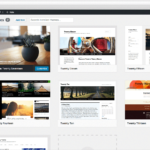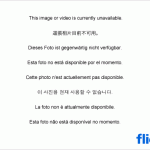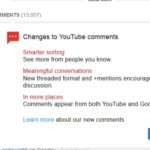We don’t want to over-complicate matters – the point of targeted outreach is building relationships with your target audience. Some call it blogger relations, others say it’s influencer marketing, and people who work in the field of classic advertising are calling it testimonials. Call it however you want, the fact of the matter remains the same – you need to do it.
Targeted outreach is the key strategy element that every successful company is using. But, why do they pay so much attention to building relationships? Because thanks to them, businesses are able to reach and influence certain groups that might never hear about them otherwise. This strategy isn’t just something companies are using. Organisations, startups, and global enterprises are utilising the benefits it offers as well.
Find the right influencers
When you’re looking for influencers, make sure to research them well. You need people who share your audience, and who are in your niche. Influencers are only useful to you if their followers are people who might be interested in your products or services. To put it simply, if you’re in the mobile gadget niche, you need someone who does reviews of such gadgets. Taking a tech influencer who usually does reviews of graphics cards or motherboards will be mostly useless as his audience isn’t following him for gadget-related information and insight.
Determine who your audience is
One way to find the best influencers for your niche and the best-ranked websites for the topic is via media monitoring. Thanks to that, you will be able to filter what happens online and find blogs, websites, and people who focus on your goal theme.
When choosing a potential partner, you should pay attention to topics they often talk/write about, their reach and engagement on social platforms, as well as their website’s backlinks.
When you’re checking out social media accounts, be aware that the amount of followers isn’t the best indicator of influence. It’s much better to pay attention to engagement rates, list mentions, and following-to-follower ratio.
Determine what you need from the influencer
Every time you reach out to one of the influencers in your niche, that communication needs to be loud and clear. You need to create clear calls to action that won’t be stuffed with filler text. Instead, they should get straight to the point.
If you want people to share something on one of the social platforms, you need to say it loud and clear. Same goes when you’re asking for feedback, downloads, backlinks, or any other type of action you might need.
Your call to action can’t be a demand or a list of instructions. If you want to see results, you need to ask people politely. Lead with what they can get if they react positively to your CTA. That move will show them that you did your research, that you know what they do, and that you’re aware of their specific needs. As a result, you will have their undivided attention.
Determine what you can offer
Before you create a pitch and email it, you should research the influencer or website you’re contacting. Once you do that, consider what they might need that you can offer – what kind of benefit will they have from reacting to your CTA? Just asking nicely isn’t a reason for people to do what you want – they need to have a motivation.
Sometimes, the ability to pose as an expert is good motivation. Other times, they will comply if it gives them a competitive edge. In some situations, you can try offering them free, high-quality content for their website, or even products that might help them.
Find the contacts of the right people
Once you know what you want to achieve, who your audience is and what you can offer to your chosen influencers, it is time to start contacting them. Reaching out is the most relevant step of this process, as it decides whether your efforts will succeed or fail.
So, before you send that email, or dial that phone number, think long and hard about what you want to say. After all, the first impression is the most important one.
Now that you did that, you just need to find the contacts of those influencers. You can’t just send an email to any address on their blog or website. It might be wrong, outdated, or someone might have even bought their blog from them. Contacting the wrong person can be dreadfully embarrassing, so do a bit of research and get the right address.
If you’re contacting a website, try to personalise your email and reach out to one specific person within that organisation. That will make the communication more professional and simpler.
On the other hand, if you can’t find anything except for that generic email address, rephrase your email, and send it to that address. Why? Well, because something is better than nothing, and if you don’t give it a shot, you’ll never know if they would have reacted or not.
Pay special attention to what your email looks like
How do you build relationships with people? By introducing yourself. So, when you’re reaching out, you need to present yourself and your business right in the first paragraph. Of course, you need to start that paragraph with personal salutations – show people that you care about who you’re talking to and that you appreciate both them and their time enough to make that effort.
When reaching out, mention any previous contact you had with that person or their organisation. Any prior correspondence, a recommendation from a mutual contact, even telling them that you’re following their social media account will help. That way, you can start building an emotional link with the person you’re reaching out to and make your message more personal.
However, reaching out isn’t all about the other person. You need to brag a bit as well. Mention your own reputation, published articles, mentions of your organisation on authority websites and blogs, etc.
To make this process more time-efficient, create a flexible email template that you can adjust to each and every new recipient. These templates won’t only speed up the process, but also let you do A/B testing with different tactics, language, and layouts.
At the end of your email, mention how much time it will take for the recipient to do what you need, and what are the benefits they will receive. That way, you will demonstrate that not only will they spend very little time on it, but that they will also have a lot to gain from doing so.
Your emails should always include:
– A short and interesting subject line
– A mention of your target audience
– A clear call to action
– An estimated amount of effort the person will need in order to comply with your request
– The benefits of their positive response to your CTA
– Your contact details in the signature
Grab their attention
Sure, making generic outreach emails is easy, but those won’t win an influencer’s attention. You need subject lines that will be attention-grabbers.They need to make people want to see what’s inside the email.
These six pieces of advice will help you write personalised subject lines that people simply can’t ignore:
1. Establish a contact in advance
Before you reach out to an influencer, make sure to establish any sort of a relationship with them. For instance, enter a discussion on Twitter that they’re also in, comment on their posts on Facebook or LinkedIn, or start following them on Instagram. Then, when you do reach out, mention those previous communications.
People are more likely to react positively to your offer if they know you already.
2. Make them feel a connection
When people are reading your emails, they will be more likely to react to your CTA if they feel that it reflects what they stand for. So, draw a line between what that influencer does and your content – make them see that you share their values.
Tell them that you really enjoyed their most recent vlog or conference talk. Mention how and why you liked their opinions on the topic they talked about. When you cover these basics, tell them that their stands regarding those topics are why you’d love to include them in your project that’s linked to those topics.
3. Use previous references
When you’re chasing new influencers for testimonials, don’t hesitate to use old ones as references. Even influencers respond to authority from their niche. So, if you have experts who said or wrote something positive about your content, suggest others to check it out as well.
Mention which organisation, influencer or website is already using your products or services and say that they’re happy with them. After that, add that you’d love to hear this new influencer’s opinion and that you’d really appreciate it if they tried it out.
4. Give back
Make sure that it’s clear that the recipient of the email will benefit from reacting positively to your CTA. Reciprocity is the key to the success of this strategy. If they do you a favour, they will want something in return. That’s why you have to emphasise what they get out of the deal you’re suggesting.
The very least you can do is recommend their content to your own readers and offer backlinks. That way, you create a win-win offer for the influencer – and no one refuses those.
5. Use the “If someone else is doing it – it has to be good” logic
Use social proof as leverage to prove that complying with your CTA isn’t a bad idea. Make sure to mention media coverage, recommendations, and social media signals. Those will prove to the influencer that others are using your products or services, sharing and talking about them, which will prove their relevance. People like to get in on relevant stories as soon as possible, so most influencers will jump at anything that has trending potential.
6. Make it seem urgent and exclusive
Give the person you’re contacting the chance to get exclusive benefits from your CTA. Also, give them a deadline for a response – make it seem urgent. That way, you have both made it seem as if the offer is tailored for them, and you have created a sense of urgency that will make them respond faster.
However, you should pay attention not to cross the fine line between urgency and pushiness. Tell them that you’ll assume they’re not interested in your offer if they don’t respond within 5 days, but don’t tell them to respond within that time frame of they will lose the exclusive offer. People don’t like feeling blackmailed.
How can you know if your attempts are successful or not?
After you’ve done your first round of outreach, you need to analyse the results carefully. That way, you will be able to find the strong points, as well as the flaws of your approach. Once you do that, you can start finding ways to improve your strategy.
In the end, did you manage to reach your goals?
Your goal isn’t simply for an influencer to mention your company – it’s for that mention to have direct results. In order to measure those results, you need to do several things.
– Brand monitoring
Use this to track unlinked and linked mentions in order to measure the success of your campaign. Make sure to do regular backlink checks – this will allow you to see which websites have recommended you. Paying close attention to traffic reports will show whether this resulted in more visitors or not. If you use tracking codes, you can see where those people are coming from. Also, if you use campaign-specific hashtags, you can successfully determine social media engagement.
– Quantitative data and qualitative analysis
Check response rates, A/B testing results, as well as the quality of the feedback and answers you received during the campaign.
– Overall progress analysis
Stop looking at the pieces – focus on the entire puzzle. Match the results you achieved with your goals. Anything that was done that brought in excellent results is worth repeating in the future. Things that had little or no effect should be thrown out of the equation from that point on.
Targeted outreach doesn’t have to be difficult, as we have shown here. You just need to follow these simple steps, test and learn, and you will quickly see positive results.








![SEO Mistakes That Should Be Avoided At All Cost [infographic]](https://www.iblogzone.com/wp-content/uploads/2017/10/Common-SEO-Mistakes-Infographic-150x150.png)
